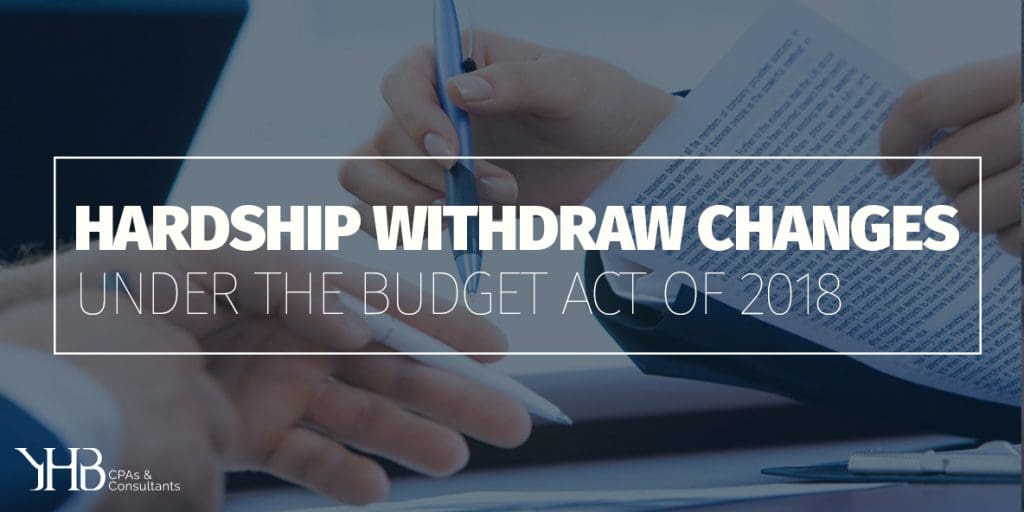If circumstances, such as immediate and heavy medical expenses, required you to make a hardship withdrawal from your 401(k) you may need to be aware of changes over the past year.

Thanks to the Budget Act of 2018, several changes are going into effect for the 2019 Plan Year in regards to hardship withdrawals:
- No requirement to get a loan first – Previously, if the Plan allowed loans, participants were required to try and obtain a loan prior to applying for a hardship. Starting in 2019, participants can now bypass this step.
- No 6-month waiting period – Participants no longer have to stop contributing to the Plan after receiving a hardship distribution. Under the prior 401(k) rules, all participants who obtained a hardship missed out on 6 months of deferrals plus any employer match they would have been entitled to.
- Investments earnings are now eligible for a hardship distribution – Under the Budget Act, investment earnings related to their elective deferral source, QMACs, and QNECs are now all eligible for withdrawal.
These new hardship rules could be effective the first day of the Plan year starting in 2019. For most Plans, this will be January 1, 2019. An amendment will be required to adopt these new rules, so we recommend all Plan Sponsors to reach out to their service providers to determine if these new rules would be right for your Plan.
Learn More About Our Employee Benefit Services
About the Author
 Erica is a native of Tallahassee, Florida and a 2008 cum laude graduate of West Virginia University with a Bachelor’s of Science in Accounting. Erica joined the firm in 2008 and is an active member of our audit team. Her experience and focus includes defined contribution, defined benefit, ESOP, money purchase, and cash balance plans.
Erica is a native of Tallahassee, Florida and a 2008 cum laude graduate of West Virginia University with a Bachelor’s of Science in Accounting. Erica joined the firm in 2008 and is an active member of our audit team. Her experience and focus includes defined contribution, defined benefit, ESOP, money purchase, and cash balance plans.
 She obtained the AICPA’s Advanced Defined Contribution Plan Certificate in 2016. Erica’s recent continuing education includes the AICPA Employee Benefit Conference in 2018.
She obtained the AICPA’s Advanced Defined Contribution Plan Certificate in 2016. Erica’s recent continuing education includes the AICPA Employee Benefit Conference in 2018.

